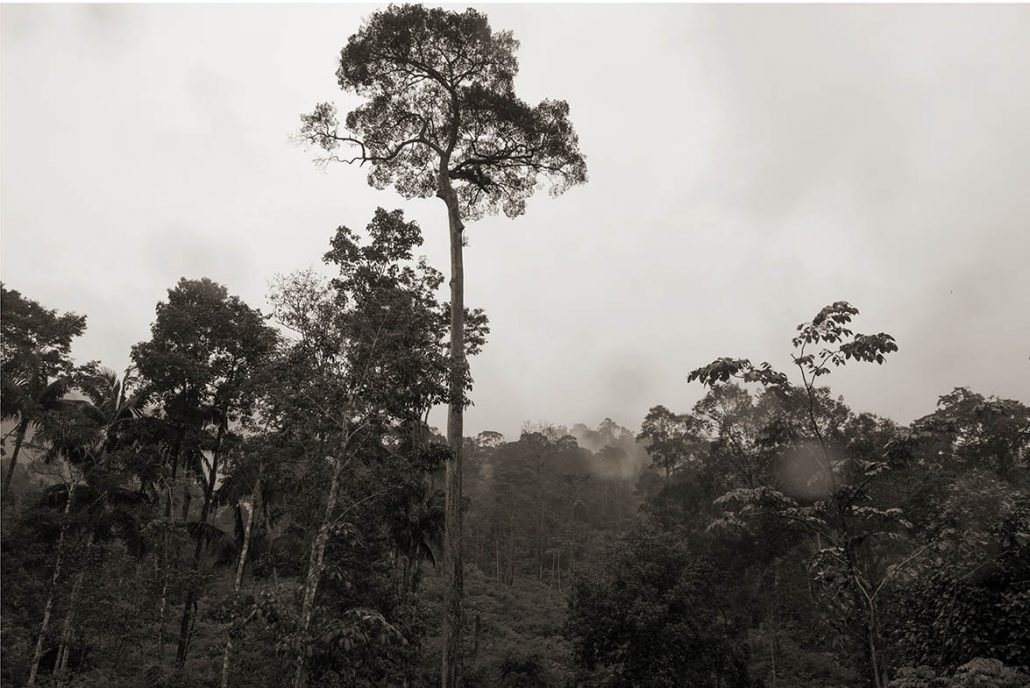This post is also available in:
 French
French
One of the planet’s last surviving tribes of hunter-gatherers is to be found deep in the mountainous jungle in the south of Thailand. Menaced by deforestation and the encroaching plantations of rubber trees, their lands shrink daily to the point where their very existence is endangered. They number only 300 today, how many will remain tomorrow?
They have the resigned look of those to be sacrificed in the name of evolution. They have existed in this region of southern Thailand for millennia, long before the border with Malaysia was ever drawn up. Hidden away in the practically inaccessible tropical forests of the Trang, Phattalung and Satun regions, the Maniq people constitute one of the world’s last groups of nomadic hunter gatherers.
Relatively little known to ethnologists and anthropologists, no-one really knows where they come from. Black skin, afro hair – the physical characteristics that would suggest African origins, but also Melanesian or even Australian Aborigine. Scornfully, the Malay refer to them as “Sakai”, or wild men. Animist and peaceful, only a handful survive today – between 200 and 300, spread across groups of 15 to 20 individuals.
Thanks to the precious help of a Thai friend who occasionally brings them eggs and clothes after several hours’ hiking, I was able to meet a small group of these “forest people” hidden in the forest of Phattalung. Not aggressive, nor even curious, these shy and courteous people who have always lived in phase with nature are now faced with a major crisis affecting their very survival. Their natural environment shrinks daily, due to deforestation and increasing plantation of rubber trees, often illegal. Lacking protein, due to the scarcity of meat from wild animals and to the dwindling supply of the tubers that were part of their staple diet, they are now suffering from malnutrition. While some try to blend into the Thai population as cheap labour on the plantations, the hardier ones head even deeper into the forest to stay hidden from the world.
In a final twist of irony, the remaining hunters are not allowed to hunt on their own ancestral lands since a 1975 law introduced by the Thai government classing them as a “sanctuary for preservation of wildlife”. A law that is hard to enforce but which further complicates the existence of these forest dwellers, veritable depositaries of an inestimable trove of empirical botanical science.
They have always preferred to flee rather than fight….but where to flee to?



